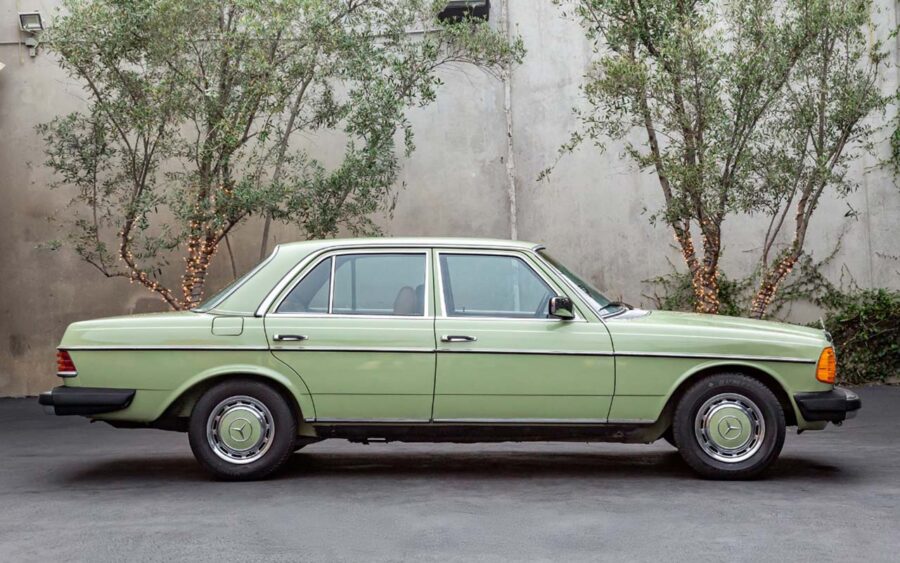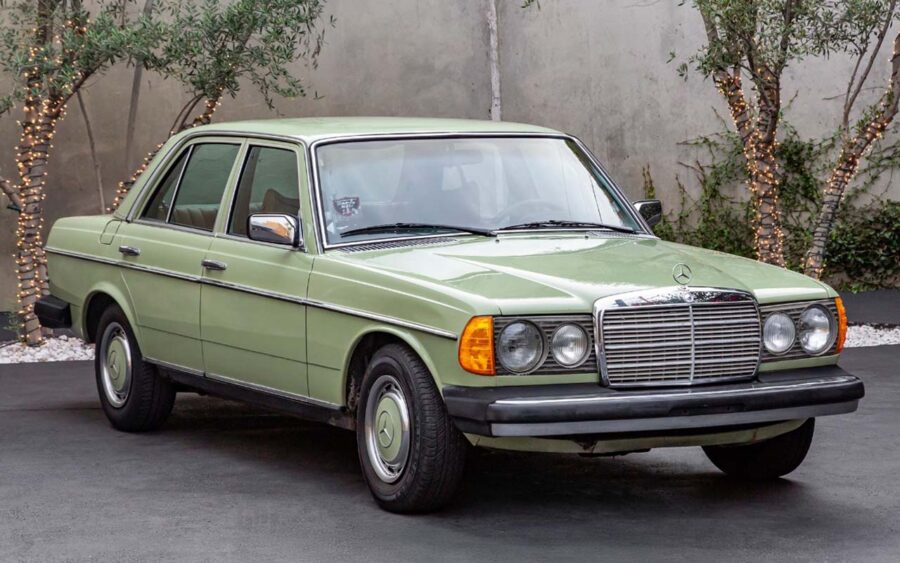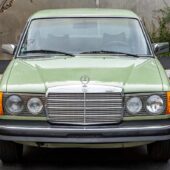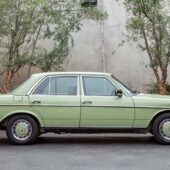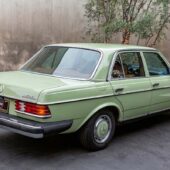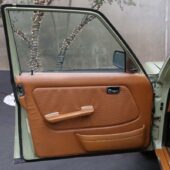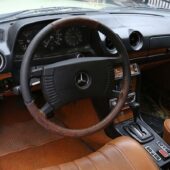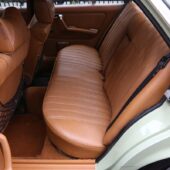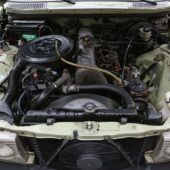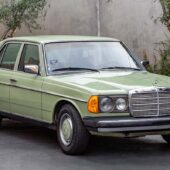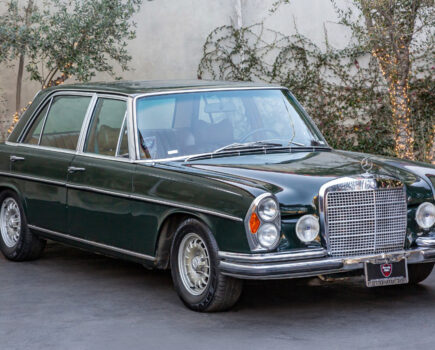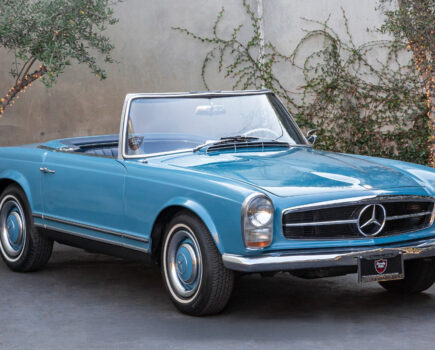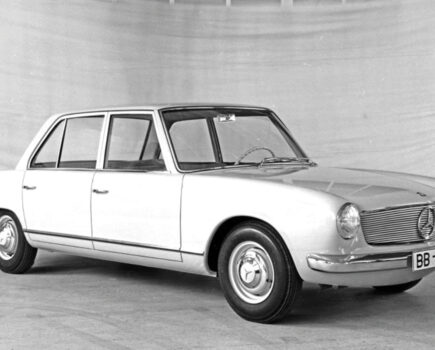Built as a workhorse and beloved as a taxi, the Mercedes W123 is easier to live with than you think
Sponsored editorial in association with Beverly Hills Car Club
Words: Jon Burgess
It’s hard to believe that the W123 was an entry-level Mercedes-Benz – but, in 1976, that’s exactly what it was. Divorced from the glamour of the C123 ‘C’ and ‘CE’ coupe (1978) and the S123 estate ‘T’ and ‘TE’ (1979) the four-door W123 – from the most basic carburetted 200 to the expensive, autobahn storming 280E – got on with the job at hand, over hundreds of thousands of miles, with a quiet elegance.
Most engines were brought over (with updates) from the outgoing W114/W115, with the only new engine – the SOHC, six-cylinder M123 (2.5-litres) a halfway house performance/servicing concession for markets without the means and fuel quality to maintain fuel injection. It found a home in working variants of the W123 – including Binz hearses and factory limousines, though many of these were also built with diesel engines.
September 1979 brought the world’s first turbodiesel passenger car engine in the form of the 300D – a five-cylinder, OM617A that represented the peak of private heavy oil motoring. 200, 220 and 240 four-cylinder diesels remained available, the 2.2-litre 220 lasting until 1979.
Steadfastly uprated across four iterations (Series 0.5, then Series 1-3), a major update in 1980 brought halogen headlights and a new M102 four-cylinder engine in 2.0-and 2.3-litre form to replace the older M115.
By 1981, the M110 six-cylinder (2.8-litre) had adopted Bosch K-Jetronic fuel injection, denoted by an ‘E’ (for Einspritzung, or ‘Injected’) after the model name. February 1982 brought a five-speed Getrag manual in to replace the equivalent four-speeders, available with all engines apart from the 300TD. The 722.1 automatic remained available throughout production.
Redesigned seats, debuting this year, also improved legroom – though a limousine, designed ‘L’ for ‘Lang’ had been available since 1979.
ABS (from August 1980), air-conditioning (1981) and a drivers’ airbag (September 1982) with passenger seatbelt pre-tensioners were also made available as options, all three being fearsomely expensive choices.
Of the 2.6 million W123s built, 2.36 million were saloons, with the C123 coupe and S123 estate managing fewer than 100,000 and 200,000 units respectively.
As the late Bruno Sacco’s W124 gradually inherited the W123’s mantle in 1985, the older car’s job was far from over. Diesel W123s carried on working as taxis in the Middle East and Africa long after their plying for hire was over in Europe; as their brethren became historic vehicles closer to home, emissions legislation, rather than fatigue, forced them into retirement.

Engine, transmission and mechanicals
With a choice of 12 engines across production, spanning four-, five- and six-cylinder variants, there’s enough performance or parsimony to suit most budgets, especially if you forego petrol and plump for diesel.
Reckon on 5000 miles for oil intervals with the petrol engines, and 2500 for the diesels. Timing chains should be done around the 60,000 mile mark.
Fuel injection was fitted to the M102 four-cylinder (as the 230E) and the twin-cam M110 six-pot (280E). All of the engines fitted to the W123 were sound, chain driven, sturdily built units, but working fuel injection brings another dimension of reliability. Plenty of specialists are still familiar with Bosch K-Jetronic; Bosch Mobile Tradition still makes spares, and while sometimes finicky to set up, are a world away from the halfway house, electronically controlled misery of later KE-Jetronic set ups used in later Benzes, such as the 190E.
Carburetted engines sit below the injected cars: M115 and M102 four pots used Solex and Pierburg units respectively: rebuild kits are available, and recon/new replacements are also available, if expensive.
Single carb cars are relatively painless to keep in tune, but the dual carburettor cars need more attention – particularly the 250 (1976-1984) straight-six, powered by a M123 engine that, like the 200 four-pots, never received fuel injection. Its carb (or carburettors in some markets) used a vacuum cell with the aim of improving economy by running lean; badly adjusted, as many of them ended up being, led to valves being burned out. Don’t let this happen to your 250.
Four-and five-speed Getrag units – the former fitted to the 230 petrol and 240 diesels, the latter either iron or aluminium cased, optional units on second series, post 1980 petrols, don’t give many issues, nor do the 722.1 series automatics for that matter. 25,000-50,000 miles for fluid changes keeps everything working nicely. Differentials give little hassle, but periodic checks on the driveshaft seals are recommended as these are, by a slight margin, the weakest link in the drivetrain.
Otherwise, keep an eye on the suspension bushes – even if a car is lightly driven, age will perish them; polyurethane replacements are available, but they add a degree of stiffness that isn’t in keeping with the W123’s character. Everything else is repairable for a competent home mechanic – but remember that you’ll need an extra-spring compressor, and the rear trailing arms can rot out if the car is driven daily and put away wet. You’ll also need a special tool for the rear wheel bearings too, though home replacement isn’t out of the question if your toolbox is suitably equipped.
Keep an eye on the steering box too – pre 1982 cars will have heavy steering at parking speeds as power steering wasn’t standard, though there’s nothing in that system to cause concern. Make sure the damper arm connected to the steering box doesn’t have any play; that’s the first thing to go before the steering box itself gives trouble. It’s far cheaper to replace or recondition the damper arm rather than the steering box, although they give the same vague sensations, with many ‘boxes wearing out prematurely through misdiagnosis and overtightening.
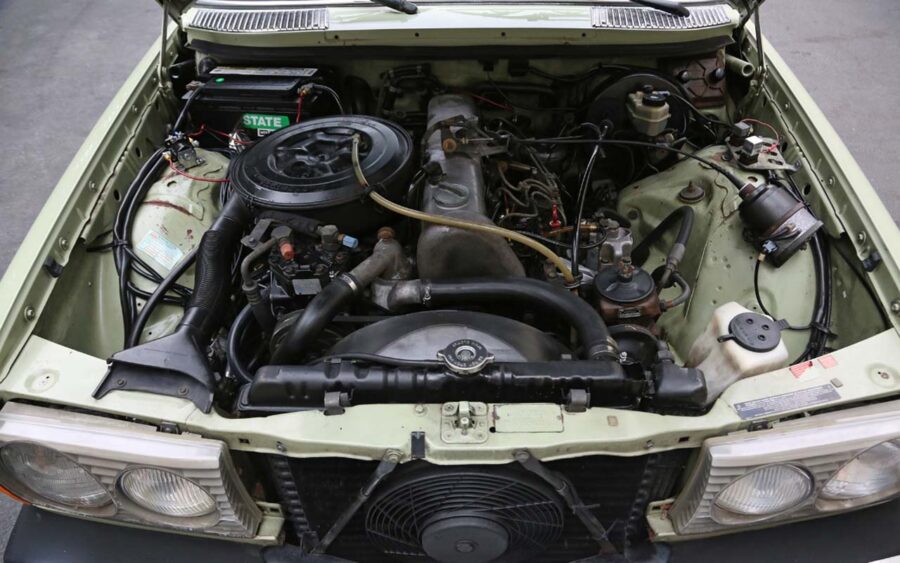
Bodywork and interior
With its excellent-for-the-day paint and good rust protection, the youngest W123 was produced in 1986, so will be feeling the effects of the decades.
Regardless of whether or not the car is kept outdoors or garaged, your main weekly bodywork checks are similar to the W126 – the front and rear wings (post-1980 cars had liners), the wheelarch doglegs, and the rear windscreen seal. The W123 saloon is well-served for panel availability if the worst comes to the worst, from OEM to third party, with new, second-hand and pattern parts on offer to suit every budget. Sunroof drain tubes can also block, causing leaks and corroded A- and C-pillars if left unchecked. If your W123 has a sunroof, and is driven in rain, keep your eyes peeled.
Trim is similarly well represented second hand, but can get expensive. There were five materials used over the course of production – MB Tex, leather, cloth, half cloth and velour, with the latter two being the hardest to replace.
Mercedes-Benz used horsehair for the seat stuffing, and its important to use OEM pads if the seats themselves wear out; third party replacements seem not to be up to the task.
Most electronics – where fitted – seem to be reliable in service, but air-conditioning units will need specialist conversion or regassing as most used R12 refrigerant, which was made obsolete in 1996. There are equivalents and workarounds, but none of it comes cheap.
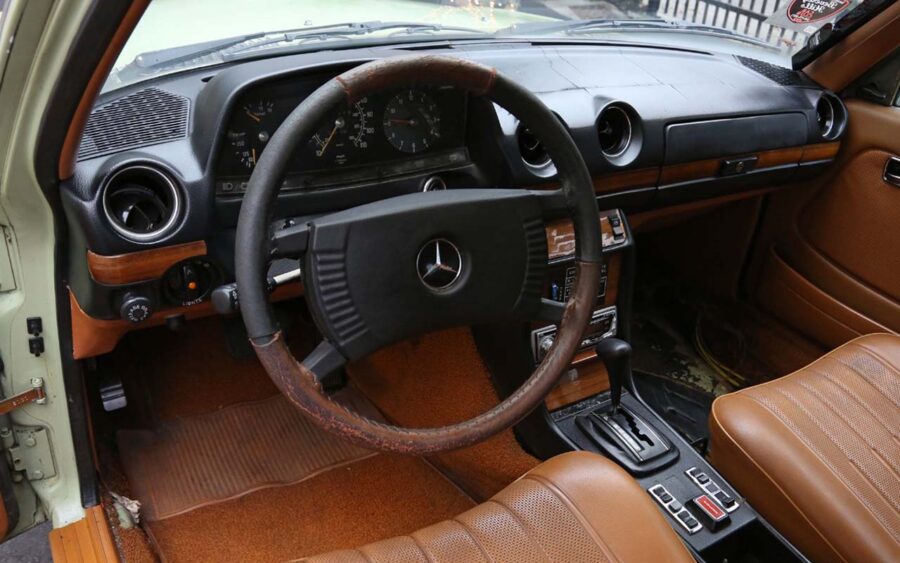
Finding a good example
Wherever you happen to be in the world, there will be a W123 to suit your needs. The USA preferred the diesels; European enthusiasts discuss the all-round merits of the 230E and 280E, while the C123 and S123, in higher price brackets, remain prized for their style and utility. Your local Mercedes-Benz club will be able to help find a cherished example; there are others hiding in auction lots or in classified ads (the benefit of a near 2.6 million unit production run).
It’s a good idea to expand your search overseas if you’re on the hunt for a rarer example, or simply want to maximise your chances of finding a rot-free car. Beverly Hills Car Club has a few examples for sale at time of writing, including the intriguing US-spec 300D in these pictures.
Sponsored by Beverly Hills Car Club
The automobiles sold at Beverly Hills Car Club combine all the elements of its exclusive address in Los Angeles: cars for sale that are the very last word in tasteful elegance, chic and impressive sophistication, with careful attention given to each vehicle and each client. Both national and international customers are catered for, with a huge stock of classics to choose from.
For more information and to view the Beverly Hills Car Club stock, visit beverlyhillscarclub.com
